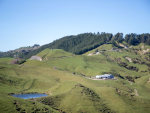Samples of food have been taken from retail, wholesale and food service outlets in England, Scotland, Wales and Northern Ireland to be tested using a technique known as stable isotope ratio analysis.
The Food Standards Agency is working with the Department for Environment, Food and Rural Affairs to check the accuracy of origin claims to ensure consumers can be confident food labelled as from the UK is what it claims to be.
More than 100 samples are being tested, made up of beef, pork, lamb, tomatoes, apple juice and honey.
Stable isotope ratio analysis can be used to give an indication as to whether a certain food has come from a certain geographic location by comparing isotopes. It is a screening method that acts as a useful indicator of potential fraudulent activity.
An isotope is a variant of a chemical element – oxygen, hydrogen and carbon are all chemical elements and each has naturally occurring variants in slightly different forms. These isotopes can be distinguished by their mass, and used to compare a particular food of claimed provenance with authentic samples of the same food produced in different regions of the UK.
If there is not a good match in results then that would strongly suggest the food was not produced in the UK and needs further investigation.
The agency says any results that suggest a problem will be followed up with an audit of traceability.
The proportion of an isotope or group of isotopes in a particular food might vary because of geological and climatic processes. Crops grown in the UK, for instance, have a higher proportion of heavy hydrogen and oxygen than the same crops grown in mainland Europe. This is because the proportion of heavy forms of hydrogen and oxygen diminishes with distance from the sea.
Another example is the way in which plants metabolise carbon dioxide results in certain plants being richer in heavy isotopes of carbon. This means the isotopic composition of animals, and meat derived from these animals, reflects where they were reared and the plant material they eat.
This project is expected to be completed by April this year and the full report will then be published.









